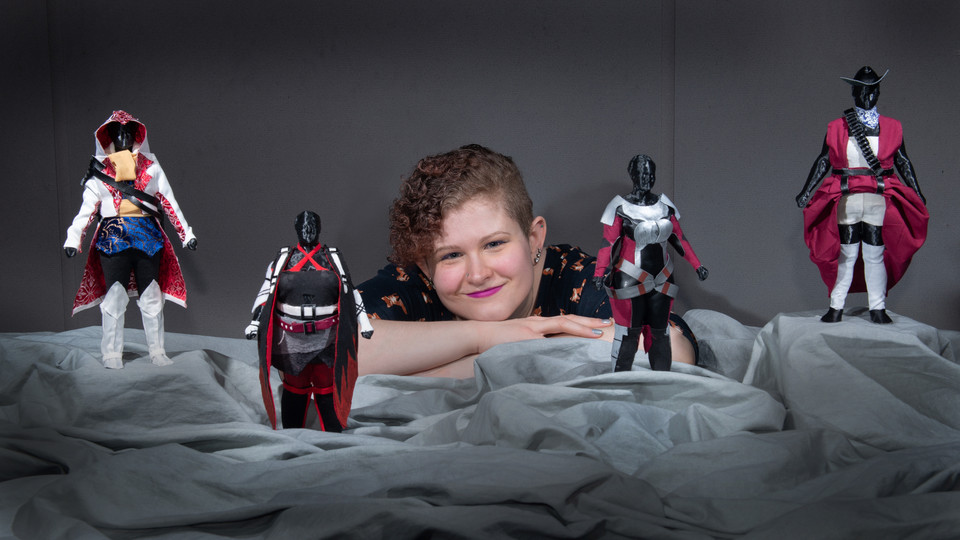
by Lindsey Amen | University Communication
December 19, 2018
For as long as she’s loved video games, one question has nagged at Stephanie Pitcher — why, in an industry where nearly half of all players are women, are female avatars not more representative and diverse?
Pitcher, a recent graduate of Nebraska's Textiles, Merchandising and Fashion Design master's program, was frustrated by the sexualized, skimpy outfits and uniform body types of these female video game characters. After digging deeper, she realized the problem was more widespread than she thought.
“I know it bothers me, and I know it bothers my female friends," Pitcher said. "So I started to ask, how do other people feel? How do women want to be represented in video games? What kind of changes do they want to see? I found out that this isn’t a favored means of clothing by a lot of women.”
To combat this standard, Pitcher made female video game avatars the focus of her graduate thesis. Beginning last summer, she used East Campus's Home Economics 3D body scanner and a 3D printer to create small-scale avatars based on real women, designing outfits that were practical instead of revealing.
To include a diverse array of body types, Pitcher had several classmates use the 3D scanner, which then transferred data points to a 3D printer at Nebraska Innovation Studio to create an exact copy of the volunteers. The miniature models were then printed in plastic, with each avatar taking close to 40 hours to create.
After the models were complete, Pitcher worked with her volunteers to develop outfits for games such as "Final Fantasy" and "Assassin's Creed." Rather than showing excessive amounts of skin, she designed the outfits around the environment of the game and level of protection needed by the avatar.
“It was very collaborative. Everyone who participated was really excited about seeing the final products," Pitcher said. “Being able to hold them and see them made into a physical form was more interactive than just seeing them on a computer screen."
Pitcher says that 3D body scanning is already being used to design video game characters, though it's typically only used for male avatars.
“It’s not a secret that there’s misogyny and sexism in the gaming industry, and it’s very hard to break tradition," Pitcher said. "The technology to do this already exists — it’s just getting them to do it with women and female characters.”
Despite those roadblocks, Pitcher hopes that her project educates others on the importance of diversity and development of female avatars, bringing new light to a long-held industry standard.
“It’s really gratifying to see that people feel the same way and are excited about potential changes,” she said. “It’s a step in the right direction. The more people push for it and demand it, the more it will be taken seriously.”